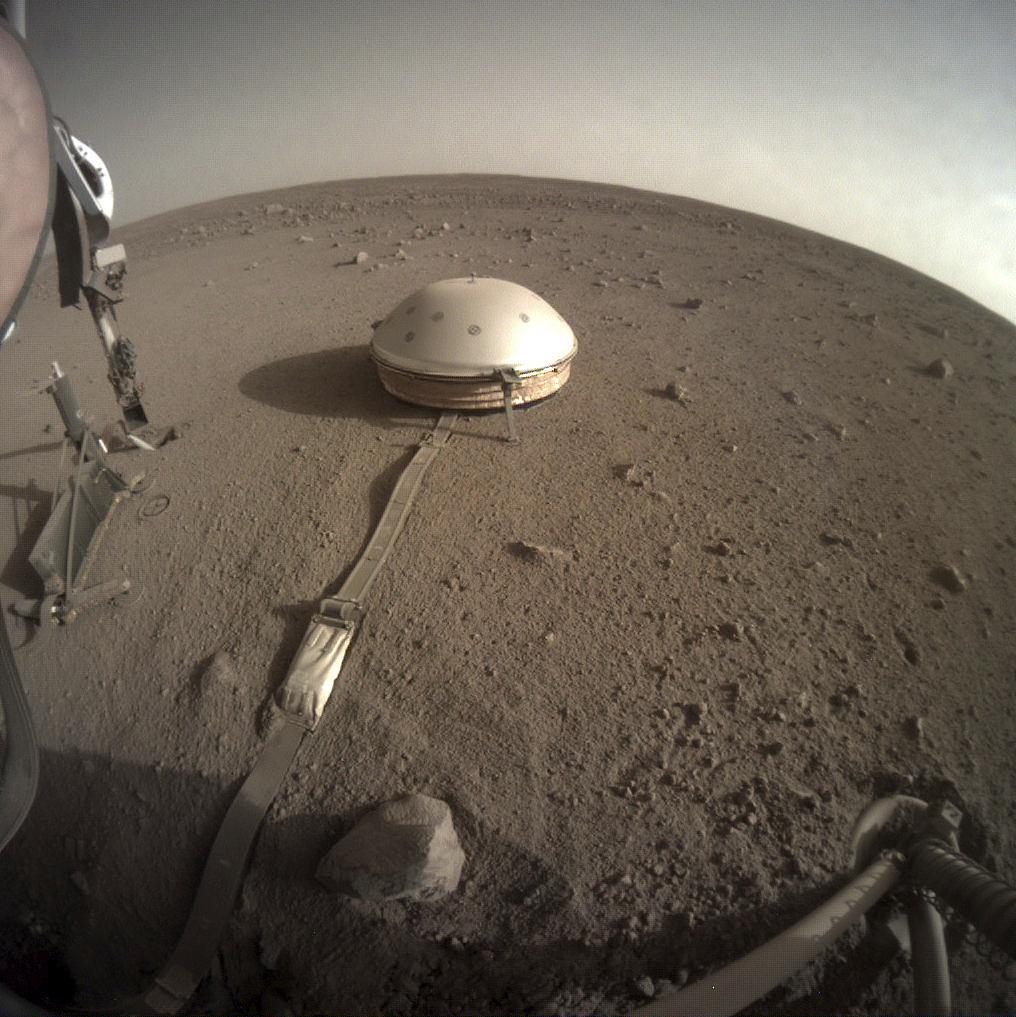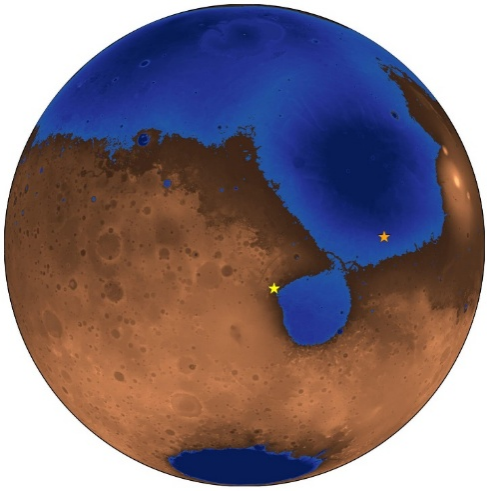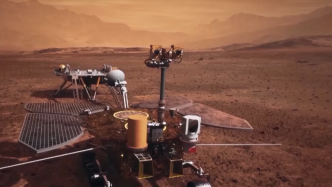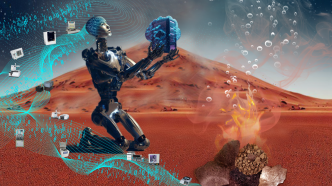
It is one of mankind’s dreams to live on Mars, but the problem of hypoxia must first be solved. Recently, the team of professors Luo Yi, Jiang Jun, and Shang Weiwei of the University of Science and Technology of China, in collaboration with researcher Zhang Zhe of the Deep Space Exploration Laboratory, used an intelligent robot "machine chemist" to successfully develop a new type of catalyst using Martian meteorites. The production of oxygen from water on the Internet provides a high-efficiency, low-energy solution, and explores a new way to develop chemicals from local materials in galaxies outside the Earth. On November 14, the internationally renowned academic journal Nature Synthesis published this research result.

Imaginary diagram of intelligent robot prospecting and producing oxygen on Mars. (Photo provided by University of Science and Technology of China)
The oxygen content in the Martian atmosphere is extremely low and cannot satisfy human survival. How can oxygen be produced on Mars? In recent years, the international scientific community has discovered that there is a large amount of water on Mars. Therefore, using solar energy to generate electricity on Mars and then using electricity to extract oxygen from the water has become one of the feasible technical solutions.
However, "electrolyzed water" also requires the use of catalysts to solve problems such as slow oxygen production and high energy consumption, and the cost of transporting it from the earth is very high. Therefore, whether catalysts can be developed locally on Mars has become a key technical issue. In addition, the Martian environment of low temperature, low pressure, and high radiation is very unfavorable for "on-site research and development" after human landing.
In response to these problems, researchers from the University of Science and Technology of China and the Deep Space Exploration Laboratory collaborated to use a self-developed intelligent robot called "Machine Chemist" to analyze and extract components from Martian meteorites and develop a new type of oxygen-generating catalyst.
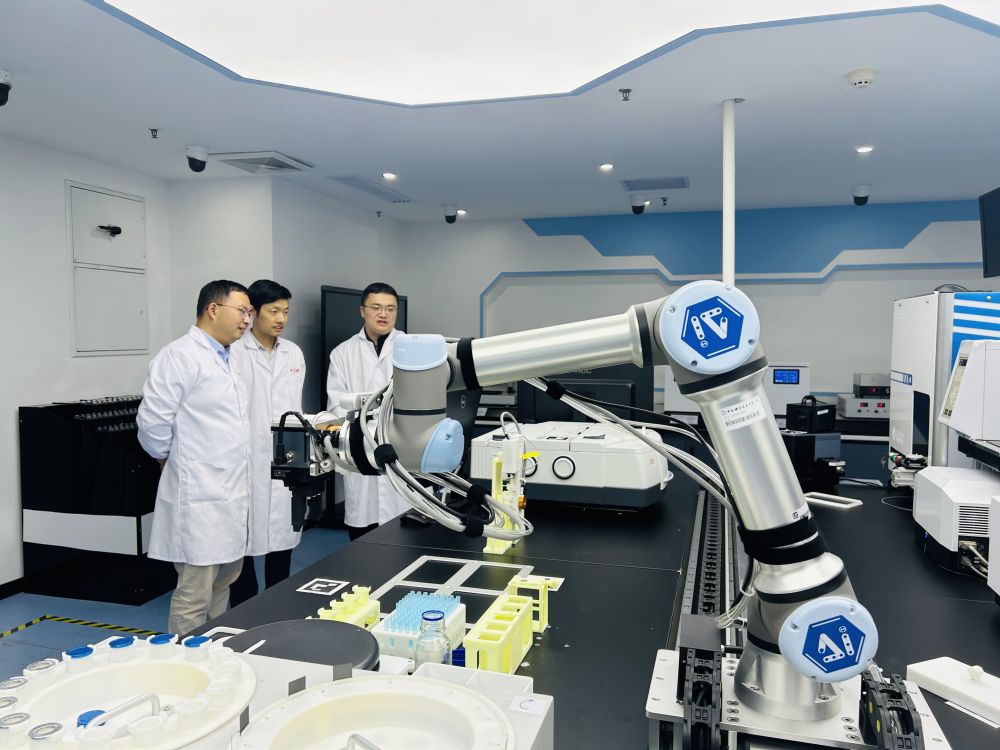
On November 10, the scientific research team of the University of Science and Technology of China and the "machine chemists" at work. Photo by Xinhua News Agency reporter Zhou Chang
Luo Yi, director of the Hefei National Research Center for Microscale Physical Sciences at the University of Science and Technology of China, said that this study successfully verified that artificial intelligence can automatically develop new materials, and is expected to contribute to human preparation of oxygen, construction of bases, and production of food on planets far away from the earth, and Using Martian resources to develop more chemicals will help us further explore the depths of the solar system.
It is reported that the "machine chemist" developed by the University of Science and Technology of China is named "Xiao Lai". It can not only "learn" but also "think" and "do". According to the various chemical compositions of Martian meteorites, there are more than 3.76 million possible combinations of catalysts developed this time. It would take more than two thousand years to rely on human scientific research teams to experimentally verify them one by one.
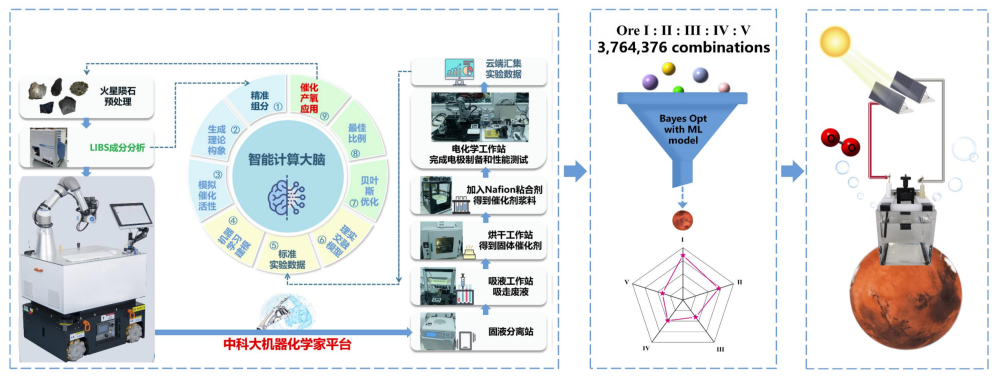
Schematic diagram of the entire process of developing catalysts by "machine chemists". (Photo provided by University of Science and Technology of China)
"'Xiao Lai' studied more than 50,000 related chemistry papers, used his 'intelligent brain' to think and design a basic formula, then conducted experiments and continuously adjusted the ratio based on the results, and spent 6 weeks to find the best formula." Jiang Jun, a professor at the University of Science and Technology of China, said that robots independently discover and develop chemicals, providing a new way for humans to explore the stars.
